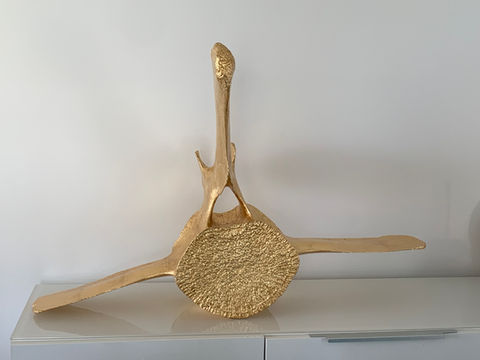
gilder of found organic objects
projects
about
I began gilding, as I suppose most people do, working on furniture and other man-made objects.
Several years ago, a friend in the Bahamas showed me a gray, pitted, decaying, algae-encrusted sperm whale vertebra. It was a disturbing object on one level, but on another it resonated with my scientific background. As a biologist, I had always viewed the inner workings and structures of organisms as fascinating and beautiful in their complexity and shapes. Suddenly, I made the connection that gilding an object that most people associate with death and decay could help others see the beauty I have always seen in biological structures.
Throughout my education in biology, in addition to wonder, I always felt gratitude to the creatures I dissected, whose inner structures I had the privilege to discover. I feel the same way when I gild the bones of a whale. I think of one whale in particular, who sadly died offshore and washed onto the beach near where I live. When the micro-organisms, sun, and salt air had done their work and scrubbed the flesh off the bones, a friend brought me one of the vertebrae to gild. With every centimeter of bone surface that I explored and covered with gold, I thought of that whale, who had probably never been touched by a human; I reflected humbly on its life in the ocean, and I thanked it for allowing me to touch it in an effort to bring it in some tiny way back to life.
My greatest happiness in making art is taking objects that most people view with fear or disgust and transforming them into objects that fascinate and call out to be touched












